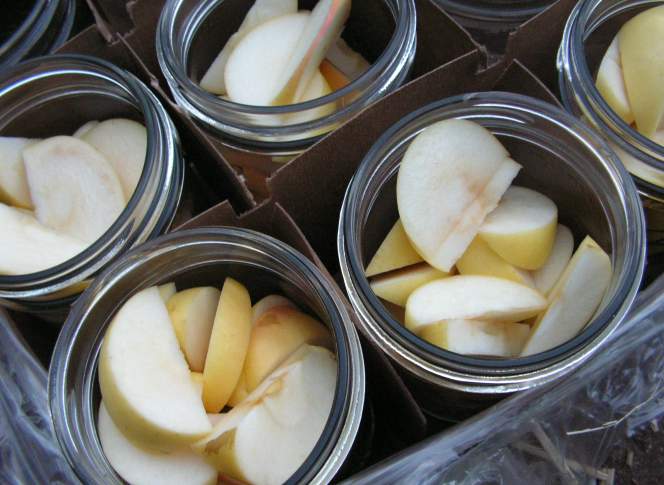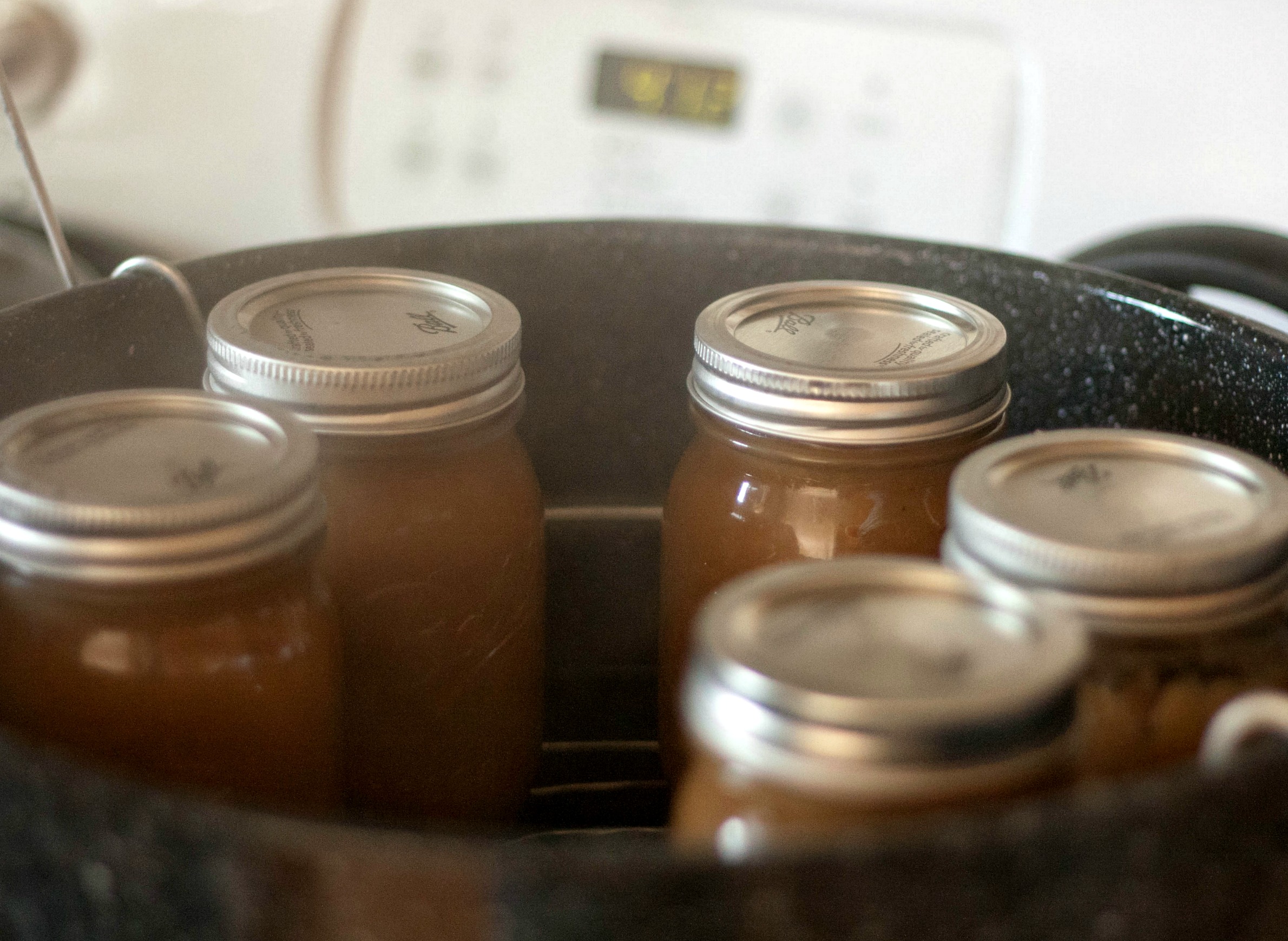Butter, Sauce And Pies: The Rewards Of Proper Apple Preservation
Given the bounty of Wisconsin's annual apple harvest, autumn and winter are a great time to think of preserving the sweetness and tang of a familiar fruit to enjoy throughout the year.
December 15, 2016

Apple slices in canning jars

Given the bounty of Wisconsin’s annual apple harvest, autumn and winter are a great time to think of preserving the sweetness and tang of a familiar fruit to enjoy throughout the year. Apples can be canned or frozen in multiple forms, including applesauce, apple butter, jelly and pie filling.
Different apple varieties are appropriate for each preservation method. It’s often the case that preserved products are more flavorful when prepared from varieties that can provide a mix of sweet and tart flavors.
Here’s a look at several ways to preserve apples for many different types of tasty treats.
Canning
Firm apples at the peak of maturity are best for canning, whatever the final product.
Making apple butter or applesauce are two primary ways to preserve apples. Both have many of the same preparation steps. A slow cooker or countertop roaster can be used to cook the apples at a low temperature without added water when preparing sauce. When making apple butter, though, cider and vinegar must be added for safety, and the added acid lends an appealing “zing” to the final taste.
Once cooked, applesauce or apple butter should be hot packed into clean, hot pint or quart jars that are closed with two-piece lids. The sealed jars should then be processed by placing them in a boiling water canner or an atmospheric steam canner.
This processing step is necessary to ensure a safe, high quality preserved product. The heat from the boiling water or steam conducts into the jars and destroys harmful pathogens that could make the product spoil or become unsafe to consume.

Instructions that call for using an oven for canning are not safe. The dry heat of an oven may destroy the sealing surface in the lid, and dry air is not effective at transferring heat into the jar.
Varieties that are good for making applesauce and apple butter include Golden Delicious, Rome Beauty, Stayman, Jonathan, Gravenstein and McIntosh.
Tested recipes should always be followed. The National Center for Home Food Preservation offers a wide variety of recipes, including one for a tasty, robust apple butter and another for an apple butter made with Sucralose. Other flavorful recipes for canning apples from the Center include apple jelly, crabapple jelly, apple preserves, spiced apple rings and apple chutney.
Another perennial favorite is apple pie filling. Clear Jel, a modified type of cornstarch, can be used for thickening pie fillings for canning. Whereas regular corn starch or other thickeners such as tapioca will break down when exposed to the heat of canning and subsequent baking, using Clear Jel will ensure a product with just the right consistency when the baked pie is presented to guests. The amount of Clear Jel can be adjusted for the desired consistency; the University of Wisconsin-Extension recommends using no more than 75 percent of the amount listed in the recipes from the Center.
Freezing
Tested recipes from the National Center for Home Food Preservation also offer guidance on how to freeze apple slices.
One alternative to canning apple pie filling is to instead freeze it after cooking. In this case, the filling can be spooned into pie plates lined with plastic wrap or aluminum foil. The filling should be frozen until firm, at which point it should be removed from the freezer, removed from the pie plate, wrapped securely and then returned to the freezer. When a quick dessert is required, the frozen filling unwrapped and placed in a pie pan lined with pastry dough. The dish is baked the same way as a frozen pie.
The National Center for Home Food Preservation recommends certain apples varieties for freezing, including Golden Delicious, Rome Beauty, Stayman, Jonathan and Granny Smith.
Eating raw
Finally, certain varieties of apples, including Red Delicious and Honeycrisp, are best eaten fresh. They do not freeze or cook well.
More information about canning and other ways to extend menus is available via Safe and Healthy: Preserving Food at Home.
Barbara Ingham is a food science specialist with the University of Wisconsin-Extension.
 Passport
Passport














Follow Us